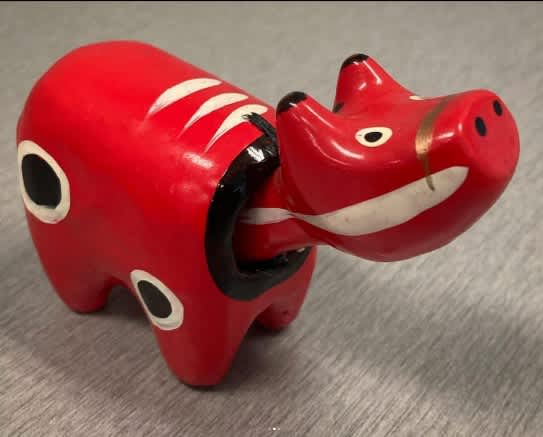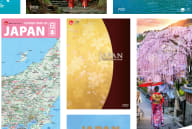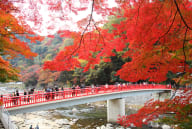While living in Japan, there was one particular folk craft that I found myself increasingly infatuated with. Though they come in many sizes, the shape and central characteristics were always some variation of the same: standing on four legs, a paper mâché body supports a protruding, bobbling head, from which two wide eyes gaze upward, staring unassumingly up upon the beholder. Its bold crimson palette, with black, white, and gold adornments alert people of its presence fairly instantly, but what it is exactly, can be hard for some to tell. This noble quadruped is called an akabeko, which translates from regional dialect into “red cow”. Originating from Fukushima Prefecture’s Aizu region, this folk craft is believed to date back as early as the 16th century, and has since become emblematic of the northern mainland’s primarily rural region of Tohoku.

It's hard to say what first capitvated me about the akabeko. Perhaps that such a simple toy can appear so earnest in its expression. Bashful, inquisitive, and a bit silly - unlike so many other folk craft which are either not intended to appear sentient, or simply come across as spooky (see: kokeshi) . The eyes beckon one to come and give its head a pat - to which it will, in turn, thank you with a reassuring nod. Exerting too much force on a smaller akabeko can sometimes cause it to topple forward, into something of an awkward handstand - the eyes, still locked in an upward glance. Though the aesthetics of this creature were enough to endear me to it personally, the lynchpin for many others should be its backstory. Despite its generally goofy appearance, the tale of the akabeko is one of heroism.

According to legend, the inspiration for akabeko was a real red cow that lived in Fukushima’s Yanaizu town, sometime in the early 9th century. The cow was said to have aided in the construction of the temple Enzo-ji, where it pledged its soul to the buddha, and turned to stone upon the temple’s completion. Other, more realist retellings hold that it simply stayed on the grounds even after their completion, pledging its life to serving the temple. Regardless of which story you choose to believe, the cow has long been revered for its act of zealous devotion.
In the late 1500’s, Gamo Ujisato, the then-lord of the Aizu region, heard the story of the akabeko, and, touched by its tale, ordered his artisans to craft him a toy based upon the cow. Though the earliest akabeko were simpler in their colouring, it was this toy that served as the model for the bobblehead as it is known today. It was also during this period that Japan was suffering a devastating smallpox outbreak. Among the villagers in Aizu, it was rumoured that children who possessed an akabeko toy were less likely to contract smallpox.
Although in retrospect, there may have been some mistaking causation for correlation in terms of the relative social status of those who could afford such toys, the akabeko nonetheless came to be seen as a talisman of good health. Artisans would soon begin incorporating these elements into their designs – painting the akabeko bright red, for the belief that the colour could help ward off illness, and giving them the black dots that have become standard today in order to represent pockmarks being taken unto the sacrificial cow.

In addition to the local pride associated with being the home prefecture of the akabeko, there is something to be said about the appeal related to its story as a metaphor for the people of Fukushima. Long have the people of Tohoku been regarded as sturdy, resilient, if yes, somewhat stubborn (“strong in the rain” to borrow the words of the poet Kenji Miyazawa, whose work was commonly recited in the wake of the March 2011 Great Eastern Japan Earthquake), and similarly has the region been devout in supporting the construction of central Japan’s metropoles, with energy and labour being two of its major exports.

Fukushima’s residents take great pride in where they’re from, and what they are known for – whether in their fine sake, the gorgeous ceramics and lacquerware, or in the folk legends and crafts such as the akabeko. Despite the initial wave of stigmatization in wake of the March 2011 disaster, this pride has only become more unabashed in response to the prejudice the disaster has caused. Though the jury remains out on whether akabeko can ward off the threat of COVID-19, between 2021 being both year of the ox, and the ten-year anniversary of 3.11, it seems that lately akabeko are more popular than ever. As a symbol of both health and of home, this noble paper-mâché creature has, and will continue to see the Fukushima through the hardest of times
Written by Liam Duffy
The opinions expressed in the above article do not reflect the views of JNTO. All content and images are property of the writer unless otherwise specified.
If you would like to submit an article to our Travellers' Blog, click here.



























































